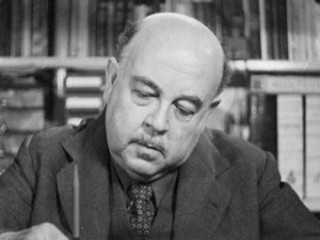
Alfonso Reyes biography
Date of birth : 1889-05-17
Date of death : 1959-12-27
Birthplace : Monterrey, Nuevo Leon, Mexico
Nationality : Mexican
Category : Famous Figures
Last modified : 2010-11-20
Credited as : Writer and essayist, ,
Alfonso Reyes one of Mexico's most distinguished men of letters, was especially well known as an essayist.
Alfonso Reyes was born on May 17, 1889, in Monterrey, Nuevo Leon. He attended the Escuela Nacional Preparatoria (National Preparatory School) and the Facultad de Derecho (Law School) in Mexico City. In 1909 he was one of the founders of the Ateneo de la Juventud (Athenaeum for Young People). He served as secretary of the Faculty for Advanced Studies, where he also taught the course on the history of the Spanish language and Spanish literature. His first book, Cuestiones esteticas (Esthetic Questions), appeared in 1911.
Reyes received his law degree in 1913, and that year he was appointed second secretary of the Mexican legation in France. In 1914 he went to Spain, where he devoted himself to literature and journalism, working in the Centro de Estudios Historicos (Center for Historical Studies) in Madrid. His book Vision de Anahuac was published in 1917.
In 1920 Reyes was named second secretary of the Mexican legation in Spain. From that time on he occupied various diplomatic posts: charge d'affaires in Spain (1922-1924), minister to France (1924-1927), ambassador to Argentina (1927-1930), ambassador to Brazil (1930-1936), and again ambassador to Argentina (1936-1937).
When Reyes returned to Mexico in 1939, he became president of the Casa de Espana en Mexico (Spanish House in Mexico), which later became the Colegio de Mexico. He was one of the founders of the Colegio Nacional. In 1945 he won the National Prize in Literature, and he was a candidate for the Nobel Prize. He served as director of the Academia Mexicana de la Lengua (Mexican Academy of the Spanish Language) from 1957 to 1959.
The works by Reyes that have enjoyed the greatest success are Simpatias y differencias (1921; Likes and Dislikes); La experiencia literaria (1942; Literary Experience); El deslinde (1944), a treatise on literary criticism which is considered his masterpiece; and La X en la frente (1952; X on the Forehead). His works have been more frequently translated into foreign languages than those of any other contemporary Mexican author.
Reyes symbolizes the humanist par excellence. To his immense intellectual curiosity and his vast culture he added a gift of style which made his prose creations peculiarly his own. He was a wise and penetrating critic, a short-story writer prodigal in surprises, and a poet of delicate sensitivity; educated in the school of Gongora and Mallarme, he was learned in both classical and modern writers.
Reyes died in Mexico City on Dec. 27, 1959. He was buried in the Rotonda de Hombres Ilustres (Rotunda of Illustrious Men).
Most biographical and critical work on Reyes is in Spanish. ForEnglish translations of his works see The Position of America, and Other Essays (1950) and Mexico in a Nutshell and Other Essays (1964), both translated by Charles Ramsdell with a foreword by Arturo Torres-Rioseco. He is discussed in Carlos Gonzalez Pena, History of Mexican Literature (3d ed., trans. 1968).
















